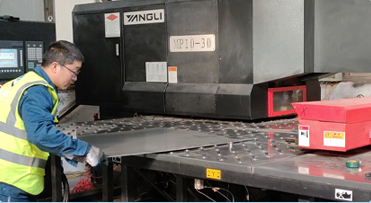Innovative Pellet Feed Machine Solutions for Efficient Animal Nutrition and Sustainable Farming Practices
Aug . 09, 2024 17:55 Back to list
Innovative Pellet Feed Machine Solutions for Efficient Animal Nutrition and Sustainable Farming Practices
The Importance of Pellet Feed Machines in Modern Agriculture
In the realm of modern agriculture and animal husbandry, efficiency and productivity are paramount. One significant innovation that has emerged in this sector is the pellet feed machine. These machines play a crucial role in the formulation and production of animal feed, particularly for livestock, poultry, and aquaculture. This article explores the benefits and functionalities of pellet feed machines, their working principles, and their impact on animal nutrition and overall farm productivity.
Understanding Pellet Feed Machines
Pellet feed machines are specialized equipment designed to convert various raw materials, such as grains, vegetable proteins, and minerals, into pellets. The process involves grinding the raw materials into a fine powder, mixing them with supplements and binders, and then using heat and pressure to form small, dense pellets. This method of feed production offers numerous advantages over traditional feed forms, including better storage, transport, and feeding efficiency.
Benefits of Using Pellet Feed Machines
1. Enhanced Nutritional Value One of the primary benefits of pellet feed is its ability to provide a balanced and concentrated source of nutrition. The pelleting process helps in steam conditioning, which enhances the digestibility of the feed. This leads to improved feed efficiency as animals can absorb more nutrients from smaller amounts of feed.
2. Reduced Feed Waste Pelletized feed reduces wastage significantly compared to traditional loose feed methods. The compact form of pellets minimizes spillage, while their uniform size ensures that animals consume the feed more completely. This not only leads to savings on feed costs but also promotes a cleaner feeding environment.
3. Convenience in Feeding Automated feeding systems can easily use pellets, making feeding processes more manageable for farmers. This convenience allows for more precise control over the feeding schedule and amounts, optimizing growth rates and improving overall animal health.
4. Versatility and Customization Pellet feed machines can produce a wide variety of feed types tailored to the specific nutritional needs of different species. Farmers can adjust formulations based on the age, weight, and specific dietary requirements of their livestock, ensuring that each animal receives the appropriate nutrients for optimal growth and production.
pellet feed machine

5. Sustainability The ability of pellet feed machines to utilize agricultural by-products and other sustainable ingredients encourages a more environmentally friendly approach to animal feeding. This contributes to waste reduction and promotes a circular economy within the agricultural sector.
The Working Principle of Pellet Feed Machines
The operation of a pellet feed machine typically involves several key stages grinding, mixing, conditioning, pelleting, and cooling.
- Grinding Raw materials are first crushed into smaller particles, which increases the surface area and allows for better mixing and pellet formation. - Mixing Ingredients, including vitamins, minerals, and additives, are thoroughly combined to ensure uniformity in the nutritional content.
- Conditioning The mixture is then conditioned by adding moisture and heat, which softens the ingredients and activates the binding properties of the starches.
- Pelleting The conditioned mixture is forced through a die under high pressure, creating pellets that can vary in size and shape depending on the specific requirements.
- Cooling After pelleting, the feed is cooled to reduce moisture content and increase shelf life.
Conclusion
Pellet feed machines have revolutionized the way animal feed is produced and consumed in the agricultural industry. With their numerous advantages, including enhanced nutrition, reduced waste, and the ability to produce customized feed formulations, these machines are indispensable tools for modern farmers. As the demand for efficient and sustainable farming practices continues to rise, the role of pellet feed machines will only become more significant, ensuring that livestock and poultry receive the optimal nutrition necessary for healthy growth and productivity.
-
Hot Sale 24 & 18 Door Rabbit Cages - Premium Breeding Solutions
NewsJul.25,2025
-
Automatic Feeding Line System Pan Feeder Nipple Drinker - Anping County Yize Metal Products Co., Ltd.
NewsJul.21,2025
-
Automatic Feeding Line System Pan Feeder Nipple Drinker - Anping County Yize Metal Products Co., Ltd.
NewsJul.21,2025
-
Automatic Feeding Line System - Anping Yize | Precision & Nipple
NewsJul.21,2025
-
Automatic Feeding Line System - Anping Yize | Precision & Nipple
NewsJul.21,2025
-
Automatic Feeding Line System-Anping County Yize Metal Products Co., Ltd.|Efficient Feed Distribution&Customized Animal Farming Solutions
NewsJul.21,2025






